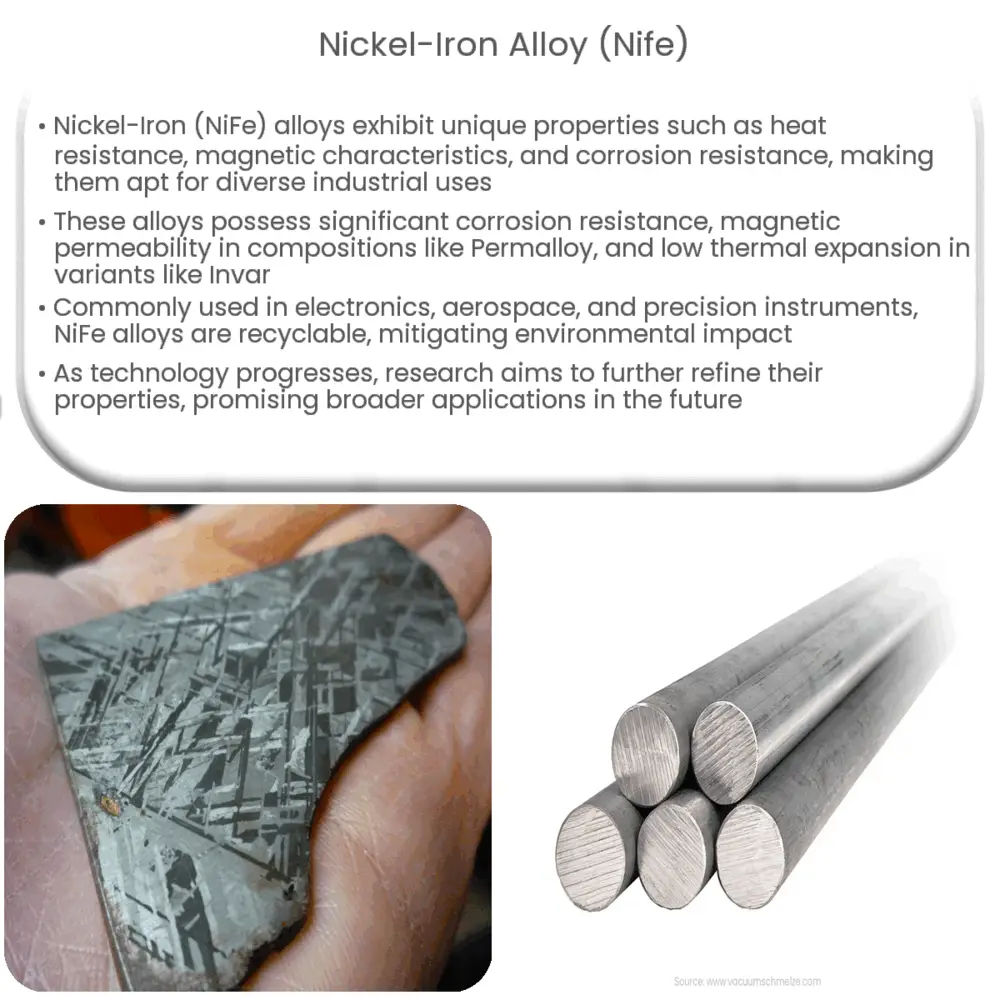Explore the properties, applications, and future potential of Nickel-Iron (NiFe) alloys in our comprehensive guide.

Nickel-Iron Alloys: An Overview
Nickel-Iron (NiFe) alloys are a versatile group of materials known for their distinctive properties, which include heat resistance, magnetic properties, and corrosion resistance. This unique combination of characteristics makes them suitable for a variety of industrial applications.
Composition and Properties
Nickel and iron, the two primary elements in NiFe alloys, are both transition metals. When combined, they form a metallic alloy with properties that differ significantly from those of the individual elements.
- Corrosion Resistance: NiFe alloys are exceptionally resistant to corrosion and oxidation, even at high temperatures. This makes them suitable for use in harsh environments where other materials would quickly degrade.
- Magnetic Properties: Certain NiFe alloys, such as Permalloy (approximately 80% Ni and 20% Fe), exhibit high magnetic permeability. This makes them useful in the manufacture of magnetic cores for electrical and electronic devices.
- Thermal Expansion: Some NiFe alloys, like Invar (roughly 36% Ni and 64% Fe), have a very low coefficient of thermal expansion. This means they do not expand or contract significantly with temperature changes, which is a valuable attribute in precision instruments.
Manufacturing Processes
The manufacturing of NiFe alloys typically involves high-temperature processes. The two elements are melted together in a furnace to form a molten alloy, which is then cast into the desired shape. Depending on the specific alloy and its intended application, additional heat treatment or cold working may be required to enhance certain properties.
Applications of Nickel-Iron Alloys
The unique combination of properties in NiFe alloys lends itself to a wide range of applications. These alloys are found in many industries, including:
- Electronics: Due to their magnetic properties, NiFe alloys are often used in the manufacture of electronic components, such as transformers and inductors.
- Aerospace: The high temperature and corrosion resistance of NiFe alloys make them ideal for components in jet engines and other aerospace applications.
- Instrumentation: Alloys with low thermal expansion, like Invar, are used in precision instruments, such as optical and laser systems, where stability is crucial.
Environmental Impact and Recycling
Like all industrial processes, the manufacture and use of NiFe alloys have environmental implications. However, one of the significant advantages of these alloys is their recyclability. Nickel and iron are both valuable and limited resources, so the ability to recycle and reuse these materials helps reduce the environmental impact of mining new raw materials.
Future of Nickel-Iron Alloys
As technology continues to advance, so too does the demand for materials with unique properties. Nickel-Iron alloys, with their combination of corrosion resistance, magnetic properties, and low thermal expansion, will likely continue to find new applications in the future. Researchers are exploring innovative ways to enhance the properties of these alloys, such as the use of nanostructuring techniques to improve their magnetic and mechanical characteristics.
- Nanostructuring: This process involves manipulating the structure of materials at the nanoscale, which can significantly alter their properties. For NiFe alloys, nanostructuring could potentially enhance magnetic properties or increase strength.
- Enhanced Corrosion Resistance: Although NiFe alloys are already highly corrosion-resistant, researchers are exploring ways to further improve this resistance. This could involve altering the composition of the alloy or applying protective coatings.
Conclusion
In conclusion, Nickel-Iron alloys are versatile materials with a unique combination of properties that make them suitable for a wide range of applications. From electronics and aerospace to precision instruments, these alloys continue to play a crucial role in various industries. The ability to recycle and reuse these alloys adds to their value, helping to reduce the environmental impact of their use. As technology and research advance, we can expect to see these alloys continue to evolve, finding new applications and becoming even more integral to our modern world.

